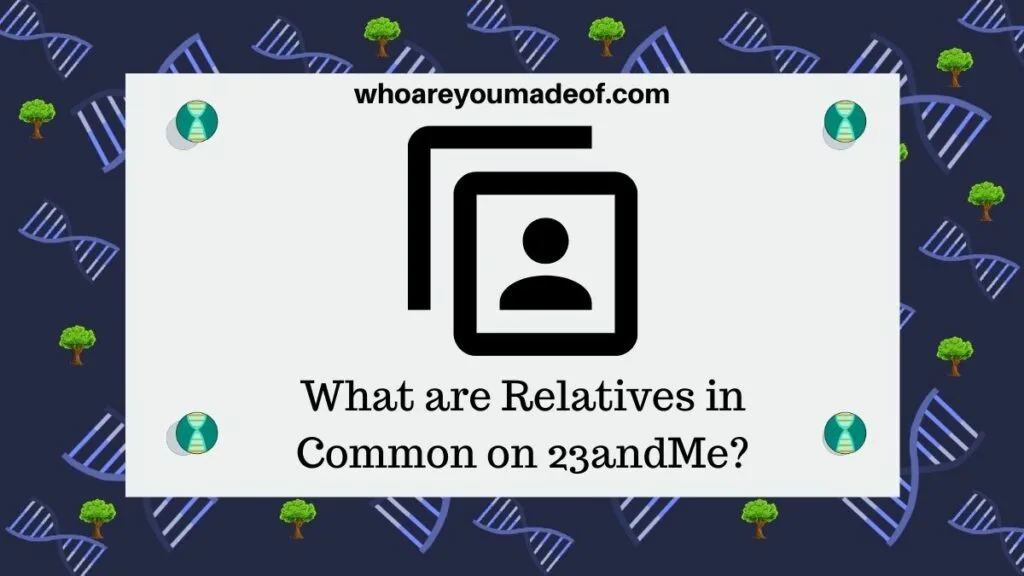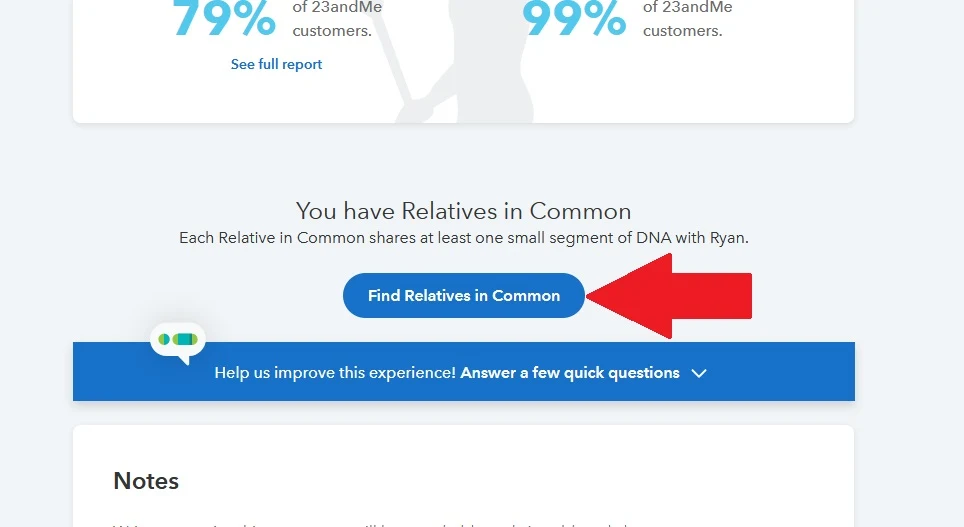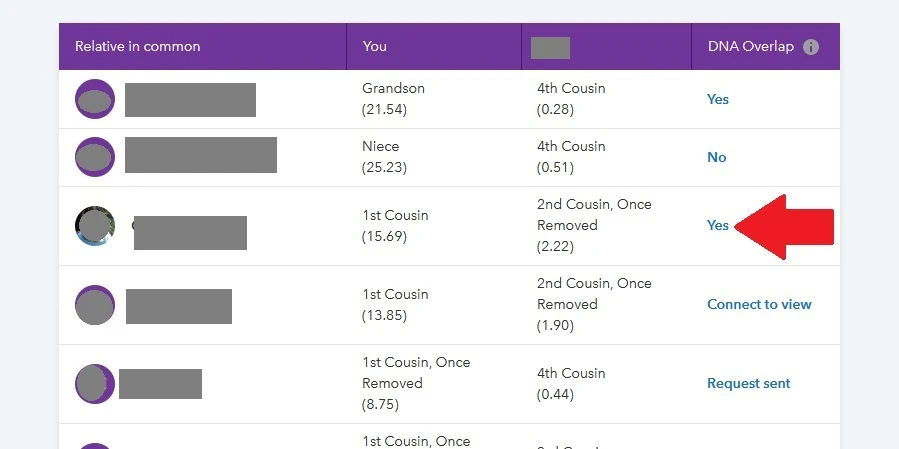Have you seen the Relatives in Common featured on your 23andMe results? As the name suggests, these are relatives that you share with your DNA relative.
In this post, learn what this really means, how to use the Relatives in Common tool, and whether all relatives you share in common with your match are connected through the same ancestor.

I love using the Relatives in Common feature when examining DNA match. In fact, it's one of the first things that I check because it is a great way to figure out which side of the family my match is on (i.e. paternal vs. maternal).
This tool is just one of the many useful features that come with 23andMe results.
How to find Relatives in Common on 23andMe
To find Relatives in Common on 23andMe, you must first choose a DNA match that you would like to examine from your DNA Relatives list. You will almost certainly have relatives in common with most, if not all, of your DNA Relatives.
Once you have identified a DNA match that you would like to learn more about, you can find the Relatives in Common feature by scrolling all the way down on the DNA match profile page.
The DNA matches that you share in common with your match will not show up automatically. Instead, you will have to press the blue "Find Relatives in Common" button to load them:

Once you click the button, your Relatives in Common will load, and you will be able to see the DNA matches that you and your relative both share.
What do Relatives in Common mean?
DNA relatives that show up as Relatives in Common shared with a DNA match are people who share at least one identical DNA segment with both you and the DNA match that you are viewing.
In other words, both you and your DNA match are also related to the relatives that you share in common. As I mentioned in the beginning of the post, this can be a very helpful feature for determining how you might be related to your match.
There is more to this than meets the eye, however, so be sure to read the last section of this article.
How to understand the 23andMe Relatives in Common tool
There is a great deal of information available directly on the Relatives in Common tool. The details you learn can help you determine which side of your family your match is on, and even how your match is related to you.
You will see four columns that tell you how you and your DNA match might be related to the relatives that you share in common.
The first column details the name of the match. In some cases, the DNA relative might have specified that they prefer their initials to be displayed instead of their full first and last name.
The second column shows the relationship estimate and percentage of shared DNA between you and the DNA match that you share in common. This is similar to the third column, except the information displayed is the estimated relationship to the DNA match that you are currently viewing.
For example, in the image below you can see the first shared DNA match, or relative in common, shared between our DNA test taker and her DNA match, whose name is greyed out in the third column. This shared match is estimated to be a grandson to our test taker, and a 4th cousin to the DNA match that we are viewing.

Some of the relatives that you and your DNA match share in common will all have an identical DNA segment located at the same location on the same chromosome. If so, then you will see a "Yes" listed in the "DNA Overlap" column:

If there is overlap, meaning that all three of our (you, the DNA match, and the shared match) have an identical DNA segment, or even multiple segments, at the same location on your chromosome(s), then it is possible that you have all inherited this shared DNA from the ancestor that you share in common.
If there is no overlap, it doesn't necessarily mean that you are not all descended from the same common ancestor. It is also possible that some of you inherited different DNA from that shared ancestor.
23andMe has an advanced tool called a Chromosome Browser, which allows you to compare your DNA with that of your DNA matches in order to examine which DNA segments you share in common. This can be useful for learning more about which DNA segments you inherited from a particular ancestor and determining your relationship to additional matches.
Are all Relatives in Common related on the same side of the family?
Relatives in Common, or shared DNA matches, can be very helpful in decided if a DNA relative is paternal or maternal, or if they are related on a particular line of your family tree. However, shared matches are not perfect data points for deciding for sure how a person is connected to you.
Why is this? Surely if we know that we are related to John through our great-grandmother's line, and we share John as a DNA match with Sarah, it means that we are all connected on Great-grandma's branch of the family tree.
Not exactly. It is possible that John and Sarah are related to each other in an entirely different way that has nothing to do with our ancestors at all.
We can be related to John through our paternal Great-Grandma Sanders, and Sarah can be related to us through our maternal Great-Great Grandfather Higgins. And while we can see that Sarah and John are related, they may or may not be connected to each other through either of those ancestors that we know that we share with them.
Shared matches, or Relatives in Common, are most reliable when we are viewing our closer relatives, such as third cousins and closer. We can use this tool as a clue for our more distant relatives, but it is less reliable as a tool for determining a potential common ancestor.
Conclusion
I hope that this post has helped you understand more about what the Relatives in Common feature means on 23andMe and how to understand the information that you learn from using the feature.
If you have any questions about something that you read in this post, please comment below and I will try to help!
Thanks for stopping by.

helen fitz
Thursday 31st of March 2022
the Relatives in Common chart will not populate. I have a daughter, Uncle and two first cousins that should be showing in the chart. Is it my settings?